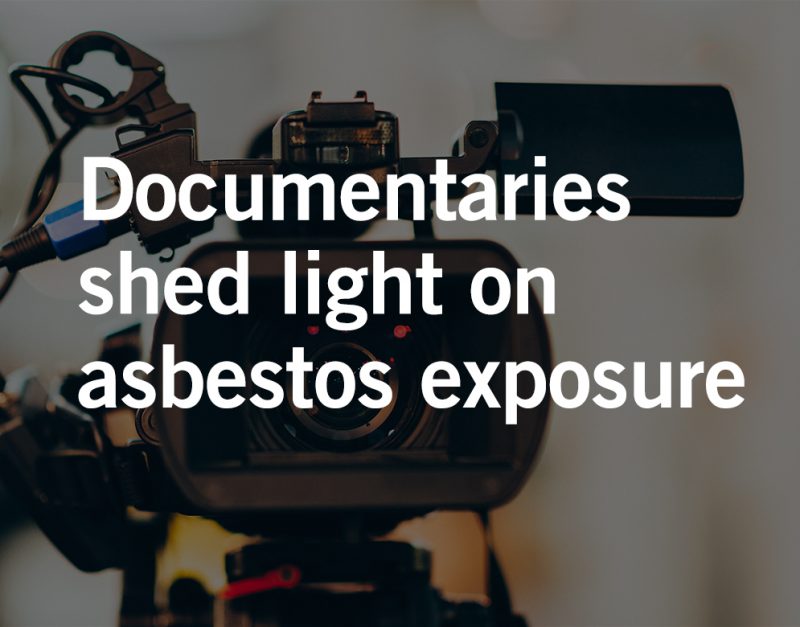 November 12, 2019
November 12, 2019 Filmmakers are traveling across the country, even across the globe, documenting the fight against asbestos and honoring the victims of mesothelioma. As the U.S. continues to struggle with enacting regulations and legislation, documentaries like ‘Dirty Laundry’ and ‘Breathless’ are showing the real impact of asbestos exposure on communities and the necessity of an outright ban on asbestos.
Airing Out the “Dirty Laundry” of Mesothelioma
In 2016, two cousins set out on a cross country journey to discover the truth and history behind the disease that caused their grandmother’s death. Traveling by bicycle from Oregon to New York City, Conor Lewis and Zach Johnson interviewed surviving family members, doctors, and anti-asbestos activists. Their 2018 documentary, ”Dirty Laundry”, is the collection of interviews and personal family stories gathered during their three-month journey. The title of the documentary is symbolic of how their grandmother was exposed to asbestos. The cousins’ grandfather worked at an oil refinery, wrapping pipes in asbestos daily. Their grandmother would shake out her husband’s dirty clothes, keeping her washing machine clean, but exposing herself to asbestos dust fibers. Connor and Zack biked an average of 85 miles a day to shed light on a problem that still exists, to honor the victims of mesothelioma, and to spark conversation for future change-makers.
Asbestos Exposure Leaving People ”Breathless”
This year, the Asbestos Disease Awareness Organization (ADAO) screened a documentary called “Breathless”, which explores the asbestos industry in the developing world and how one company knowingly harmed communities in Belgium and India. The film follows Daniel Lambo, whose father worked for a Belgium asbestos company, as he travels to India with Eric Jonckheere, whose parents and two brothers died from mesothelioma. “Breathless” focuses on how the Belgian company, ETEX/Eternit, knowingly exposed a Belgium community to asbestos in the 1970s and then again caused asbestos exposure in an Indian community in the 1990s. An advocate involved in the film stated that the documentary is important because people in the West think the issue of asbestos exposure is in the past and people in countries, like India, are unaware of the dangers of asbestos exposure.
Asbestos Exposure and Mesothelioma
Asbestos is a fibrous material most commonly used in insulating products and many industrial and construction products. The naturally occurring fibrous materials can separate into dust-like particles. If the asbestos dust is inhaled, it can settle and form deposits at the bottom of the lungs, leading to serious and deadly diseases. Exposure to these fibers can be firsthand or secondhand. For instance, a family member of someone who carries asbestos fibers home on their work clothes can encounter secondhand exposure when shaking out the contaminated work clothes for the wash. Asbestos exposure can cause mesothelioma, lung cancer, and asbestosis.
Mesothelioma is a terminal, aggressive cancer that occurs when malignant cancer cells live in the sac that lines the chest, abdominal cavity, or heart. The average age of a mesothelioma victim is 50 to 70 years. There are three types of malignant mesothelioma: epithelioid, fibrous, and mixed. Epithelioid is the most common type of mesothelioma. A long period of time may elapse between exposure to asbestos and signs or symptoms of mesothelioma or asbestos-related diseases, causing late diagnosis for the victims.
Unlike other countries, the U.S. still lacks an outright ban on asbestos, and imports tons of asbestos products into the country every year.
How We Help Victims of Asbestos Exposure
Seek justice with the help of our experienced asbestos attorneys. Our asbestos law firm has represented individuals like you affected by asbestos exposure for over 20 years, aggressively fighting the corporate giants responsible for their dangerous products. If you or a loved one were exposed to asbestos or suffer from a disease caused by asbestos like mesothelioma, we can help.


